By Karen Ronney
Tyler Jung of the South County Tennis Shop is clearly an expert on all things tennis as a player, Racquets Sports Professional Association teaching professional and an experienced retailer. The Irvine resident led a comprehensive workshop enjoyed by approximately 25 attendees at the Racquet Pro Free Lunch (RPFL) Workshop sponsored by the RSPA San Diego Division on Monday, January 27, at the Pacific Beach Tennis Club.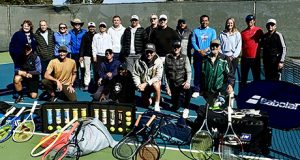 Many topics were addressed at the event as Jung shared his invaluable insights on optimizing tennis equipment with 2025’s latest technology to elevate player performance. He competed for Irvine Valley College and Biola University.
Many topics were addressed at the event as Jung shared his invaluable insights on optimizing tennis equipment with 2025’s latest technology to elevate player performance. He competed for Irvine Valley College and Biola University.
“Tyler provided critical information to help our pros better service students of all ages,” said Sabi Leon, the President the Board of Directors for RSPA San Diego. “He covered every aspect from types of racquets, variety of strings, best tension and so much more. This was an exceptional presentation.”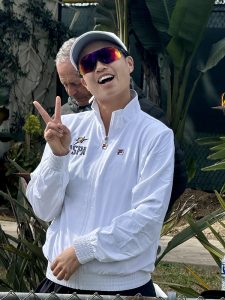 The Southern California Tennis Association Foundation has been a past sponsor of RSPA San Diego events. The SCTA Foundation also strives to support the pathway for new teaching pros with its scholarship to pay for certification fees.
The Southern California Tennis Association Foundation has been a past sponsor of RSPA San Diego events. The SCTA Foundation also strives to support the pathway for new teaching pros with its scholarship to pay for certification fees.
“The RSPA is an outstanding organization and we are proud to help in any way we can,” said Linda Milan, the Executive Director. “We stand behind our So Cal teaching professionals and look forward to partnering with RSPA in future endeavors.”
Understanding the Importance of Equipment
Jung emphasized that while professional players’ racquets may look the same as those available to the public, they are often customized to meet specific needs. He stressed the types of racquet brands, tennis balls and strings can be confusing with a vast range of options. It can be helpful for coaches, pros and shop owners to advise players on the best fit.
“My goal was to share knowledge of the equipment so pros can better set up their students with racquets and strings,” Jung said. “I also wanted to explain the process from the pro shop to the tennis court to allow all students – from kids to adults- to maximize their potential.” 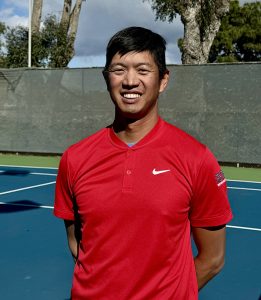
Adapting to the Modern Game
The game of tennis has evolved to become faster with more spin and power. Jung said that while the sport used to favor serve-and-volley players, today’s game requires adaptability and endurance. Selecting the right equipment based on a player’s style is crucial.
“There is no one-size-fits-all solution,” Jung said. “That doesn’t make sense anymore.”
Jung said a racquet should feel like an extension of the player’s arm, ensuring balance and weight are aligned with body mechanics. When recommending a racquet, there are three key questions:
- What is the athlete’s style of play?
- Do they need control, spin or power?
- What grip should they use?
He also categorized racquet into four main types:
- Old School Control – This is a dead-feeling frame that is best suited for driving through the ball with a lower trajectory over the net.
- Modern Control – A racquet in this category allows a player to create more spin and shape on the ball.
- Power Racquets – This type of racquet is considered balanced and can produce extra power.
- Spin Racquets – For players that love topspin and slice, this choice provides a forgiving and responsive feel.
How to Select the Right Grip Size
Matching the correct grip size to a player’s hand can be determined by using the finger test, where the player should be able to place a finger between the palm and thumb when gripping the racquet. Comfort is the priority ensuring the racquet becomes a natural extension of the hand.
For shoes, Jung emphasized the need for the right fit to enhance comfort and performance.
“The discussion on racquet types and string setups based on playing style was incredibly useful,” said RSPA Pro Steve Thom from Lake Murray Tennis Club (LMTC.)
Said RSPA Pro Nathan Weldon from LMTC: “Often times we think of just picking the lightest frame for our juniors and beginning adults and think it’s a good fit. There is a lot more to it than that and I’m so glad I came today.”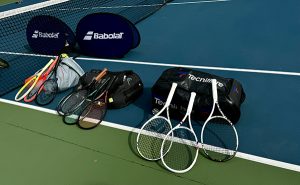
The Importance of String Selection and Maintenance
Jung provided an in-depth look at string selection, explaining that strings play a crucial role in performance. He highlighted seven key indicators that suggest when it is time to restring a racquet.
- Strings shifting or forming a “sideways smile.”
- Discoloration or fading.
- Dirty strings.
- Notching (dents where the cross and main strings intersect.)
- Worn-out string edges, losing their ability to grip the ball.
- Gaps appearing between strings.
- Incorrect tension – beginners should not use extremely high or low tension.
 Jung suggested there are four main considerations for selecting strings.
Jung suggested there are four main considerations for selecting strings.
- Multifilament: This is a softer and more absorbent string perfect for comfort.
- Polyester: Provides a slide, snap and darting effect on impact that favors advanced players.
- Hybrid: A great choice that combines synthetic, multifilament and polyester strings for a customized feel.
- Gut: Offers excellent feel but is expensive.
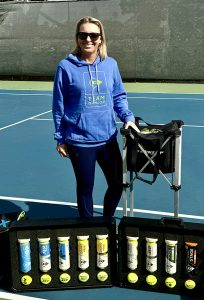
String Gauge Matters
Jung also explained the difference between string gauges and clarified that 16-gauge is softer on the arm and more durable. A 17-gauge string is thinner and gives more feel, spin and action, which is better for faster swings but may not last as long.
“Tyler was fantastic,” said RSPA Pro Dennis Stojewa. “I learned the difference between a poly and multifilament string. I’ve been in the business for many years and I heard things that I’d never thought about. His expertise was impressive.”
Finally, the string tension used makes a huge difference in the performance of the racquet. Higher tension 50 to 60 pounds offers more control and reduces the trampoline effect. Lower tension under 50 pounds can provide more power because it increases the trampoline effect.
Said RSPA Pro Jose Torres: “I had no idea there was so much to consider when buying and stringing a racquet. The guidance on gauge, style and stringing tension was invaluable.”
The workshop received high praise from attendees, who found the information both insightful and practical. His deep dive into the nuances of tennis equipment will enable RSPA pros to help today’s players approach the modern game with the right tools for success.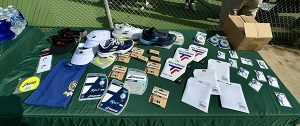 “Balancing the power of the player and the power of the equipment is key,” Jung explained. “I’m grateful for the opportunity to help my RSPA teaching community.”
“Balancing the power of the player and the power of the equipment is key,” Jung explained. “I’m grateful for the opportunity to help my RSPA teaching community.”
For more questions or information, Tyler Jung can be reached at leonjungtennis@gmail.com. For more information about RSPA San Diego, follow us on Instagram @rspasandiego. To become a RSPA member or get certified, go to https://www.rspa.net.
###
About the Southern California Tennis Association Foundation:
We are a 501c3 nonprofit organization and is the charitable arm of USTA Southern California. The Foundation’s mission is to “Change lives and build communities through tennis.” Since 2020, the SCTA Foundation has had a community impact of giving over $1million in tennis grants and tennis scholarships to deserving youth, adults, tennis organizations, tennis facilities and tennis programs to make tennis an equal opportunity sport, accessible to all, regardless of age, ability, ethnicity, or economic background. Visit us on Social Media on Instagram and Facebook. To learn more about the SCTA Foundation go to: www.sctafoundation.org. To donate go to: sctafoundation.org/donate/.



